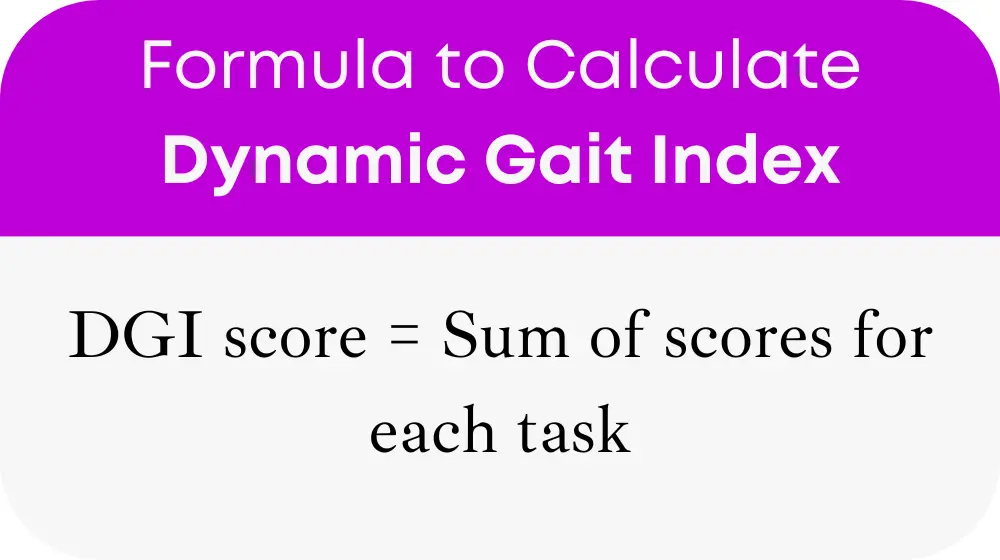The Dynamic Gait Index Calculator is an invaluable asset for physical therapists and clinicians, designed to evaluate a patient’s gait, balance, and likelihood of falling. This tool measures the patient’s ability to perform specific tasks, each reflecting different aspects of gait and balance. The cumulative score obtained from these tasks offers insights into the patient’s mobility challenges, guiding healthcare professionals in crafting customized rehabilitation plans.
Formula of Dynamic Gait Index Calculator
The core of the DGI Calculator lies in its formula:

Each task within the DGI is scored on a scale from 0 to 3, where 0 represents inability and 3 indicates normal performance. The tasks include:
- Gait level surface
- Change in gait speed
- Gait with horizontal head turns
- Gait with vertical head turns
- Gait and pivot turn
- Step over obstacles
- Step around obstacles
- Gait with eyes closed
By aggregating the scores across these tasks, the DGI Calculator offers a comprehensive measure of an individual’s gait and balance.
Table for General Terms
To assist users in interpreting the DGI scores without the need for manual calculations, a table detailing score ranges and their associated mobility levels is provided. This table serves as a quick reference to gauge an individual’s gait and balance proficiency:
| DGI Score Range | Mobility Level |
|---|---|
| 19-24 | Low risk of falling |
| 13-18 | Moderate risk of falling |
| 0-12 | High risk of falling |
This categorization helps in making immediate assessments and decisions regarding patient care.
Example of Dynamic Gait Index Calculator
Consider a patient who scores as follows across the DGI tasks:
- Gait level surface: 3
- Change in gait speed: 2
- With horizontal head turns: 2
- With vertical head turns: 2
- Gait and pivot turn: 1
- Step over obstacles: 2
- Step around obstacles: 1
- Gait with eyes closed: 1
The cumulative DGI score for this patient would be 14, placing them in the “Moderate risk of falling” category. This score indicates a need for targeted interventions to improve balance and reduce fall risk.
Most Common FAQs
A: A low DGI score suggests a high risk of falling, indicating significant mobility and balance issues. It signifies the need for comprehensive rehabilitation to enhance safety and mobility.
A: Yes, the DGI is applicable across various age groups but is most commonly used in elderly populations where the risk of falling is a primary concern.
A: The frequency of DGI assessments depends on the individual’s condition and progress. Typically, it is administered at the onset of a rehabilitation program and periodically to monitor progress.